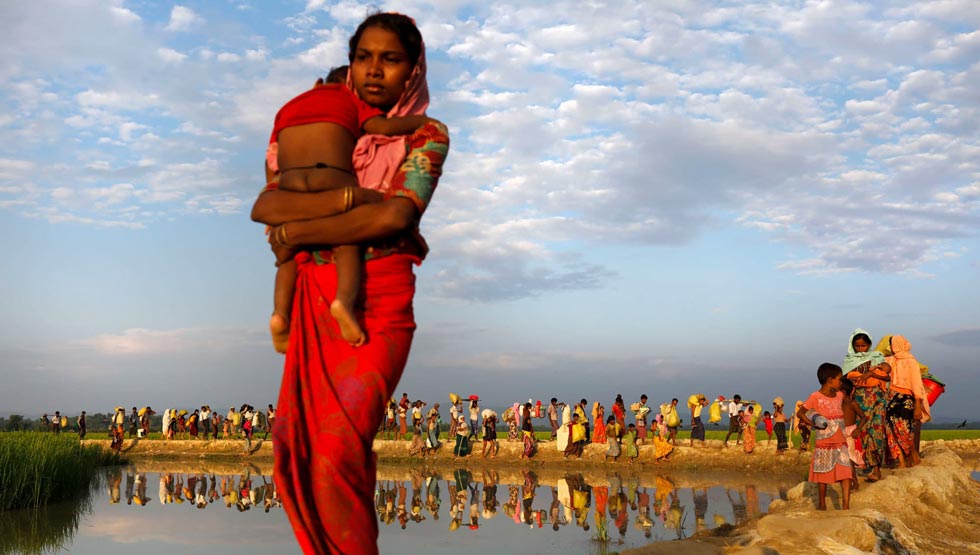The focus of ‘ gendered subaltern studies’ has always been to destroy the top-down approach to the narrative of any history which has been sustained throughout the times. The issue of the refugee crisis in the global scenario still has a very singular lens and perspective when it is being dealt with in mainstream media. Most of the aspects which are focused on are the economic crisis (like in the case of Brexit) or even cultural in nature (like that of the Rohingya issue). The main media frames mainly in global and even national media (Indian) have been exclusively portraying women’s role, especially for refugees as ‘helpless’, ‘tending to children, and even ‘victims’ who have survived multiple sexual assaults. The concept of media framing has been important in the building of perceptions of the people. These very frames have been essential in determining how the public narratives develop and evolve eventually. To essential and key aspects in this form of representation is the ‘public discourse’ and the ‘political discourse’ the latter influencing the former to a great extent. We will be discussing this idea on the premise of considering the concept of framing to be a way of political discourse and the subsequent influence it has on public perceptions. It would be wrong to deny the fact that there has not been a change in the narration of reporting in several news media outlets. Namely, the BBC and Al Jazeera have heavily reworked their stylesheets and reportage to ensuring there has been more ‘humanisation’ of the news events covered (Wijngaarden, 2016). This has been especially noticed post-2017. Stuart Hall had once elaborated on the need for representation of various cultures. According to Hall,
Meaning is what gives us a sense of our own identity of who we are and with whom we ‘belong’. (Hall, 1997)
This very question of identity is exactly what is going to should be introspected for the news through the lens of gendered subaltern and the fact that how the very same media which has evolved in portraying more humanitarian language it often forgets the top-down approach it has taken and especially focusing on how feminist narratives often get sidelines consciously and at times subconsciously while doing stories and covering particular issues.
Normalizing sexual violence has remained a key aspect in determining how the women’s community is often portrayed in mainstream media. The fact that women have been victims of sexual and physical violence so much so that the only representation of the same has crept into the media. Most of the broad headlines highlight the violence a specific gender has to undergo and the extremism of it often described graphically. This, in turn, makes us question how we portray women, especially while highlighting crisis situations and moments of distress. Mainstream media mainly focus on the situation of Rohingyas but seldom report how Rohingyas identify and shape themselves. This representation or voice to be originating often from their very own community is lacking in the media discourses which let the question arise if at all the news and the information which reaches us is propagating more mainstream news and makes us determine and encounter a reality check on how far the discussion of the gendered subaltern has reached beyond academia to the real public perception.
It is this very idea of these variations when elaborating that Hall iterated that in moving beyond the accuracy or inaccuracy of specific representation he argues that the process of representation itself constitutes the very world it aims to represent, and explores how the shared language of a culture, its signs and images, provides a conceptual roadmap that gives meaning to the world rather than simply reflecting it. Hall’s concern throughout is the centrality of culture to the shaping of our collective perceptions, and how the dynamics of media representation reproduce forms of symbolic power which is key to determining perceptions. The narrative of women being gendered and the incident relating to a refugee community is specific has always been portrayed in mainstream media. The theory of social construction of reality which has been highlighted more evidently in the post-truth world is cardinal in judging the existence of different narratives but the severe domination of one narrative over the other is where the message gets lost. In a day and age where a more feminist narrative is being encouraged by the audience who consume media. In order to meet the cultural ideals of femininity contribute to their victimization. Also, the qualities that men are urged to exemplify (aggressiveness, dominance, sexuality, and strength) are identical to those linked to the abuse of women which produces a question of binaries too along with the implication of certain roles.
The issues regarding crises will always be key in understanding how it is dealt with not just at a structural and policy-making level but also when it comes to representing the story to the masses. It becomes evident that the people involved must also view gender as an important issue while reporting on the situation, Women especially are often represented and even presumed only to represent the ‘misery’ of the situation acting as the harbinger of helplessness and a figurative representation of the devastation caused by the crisis. The victim frame supplements this very approach and initiative by clubbing women under the category of ‘victims’. Presenting them as people who should always be at the receiving end of ‘help’ establishes a structure of power and places women in a position who is in absolute need of help from the institutions, rehabilitative centers in place but in turn, also have to rely on the male-centric family approach to take care of themselves.
It is only obvious that the mainstream media will not be able to provide in its pages every micro aspect of the women and their struggles due to simple media ethics of following up more topical stories but the characterisation of women in spaces which reaches out to a larger group of people especially when their opinion formation towards these issues make everyday discussions it is important to make sure that these realities are at least covered in separate stories apart from geopolitics and the international or legal conundrums which are present throughout the pages.
References
Hall, S., Evans, J., & Nixon, S. (2013). Representation. SAGE.
Wijngaarden, V. (2016). Dynamics behind persistent images of “the other”


Srimoyee Biswas– Srimoyee has completed her graduation in Journalism from Christ (Deemed to be University), Bangalore and is currently about to pursue her Masters in Social Exclusion and Inclusive Policy from Jamia Milia Islamia, Delhi. An enthusiast about research and dabbling mainly with ideas of media studies and social concepts her research interests mainly lie in migration, gendered structures and neo-Marxian ideologies within democratic frameworks.





